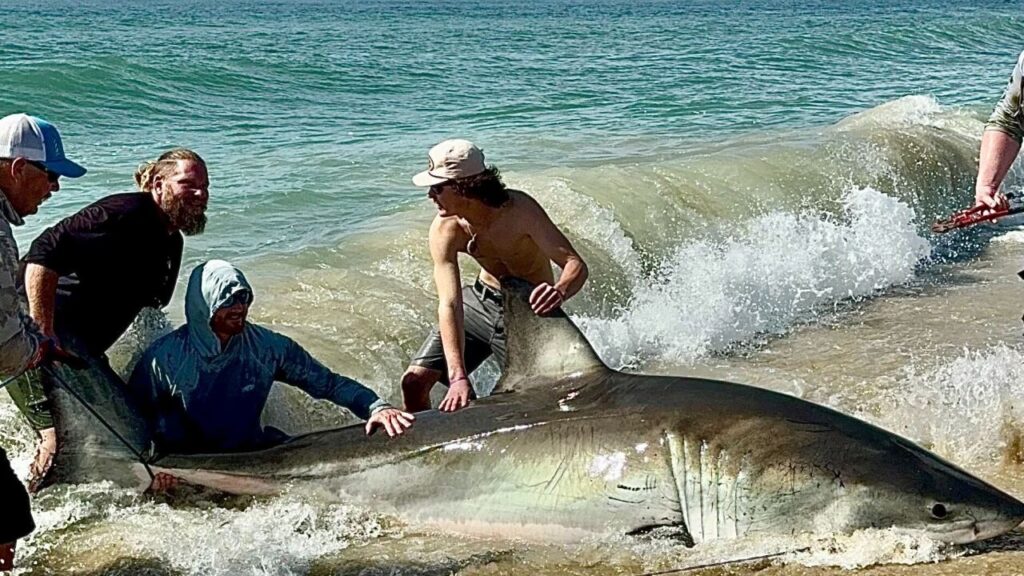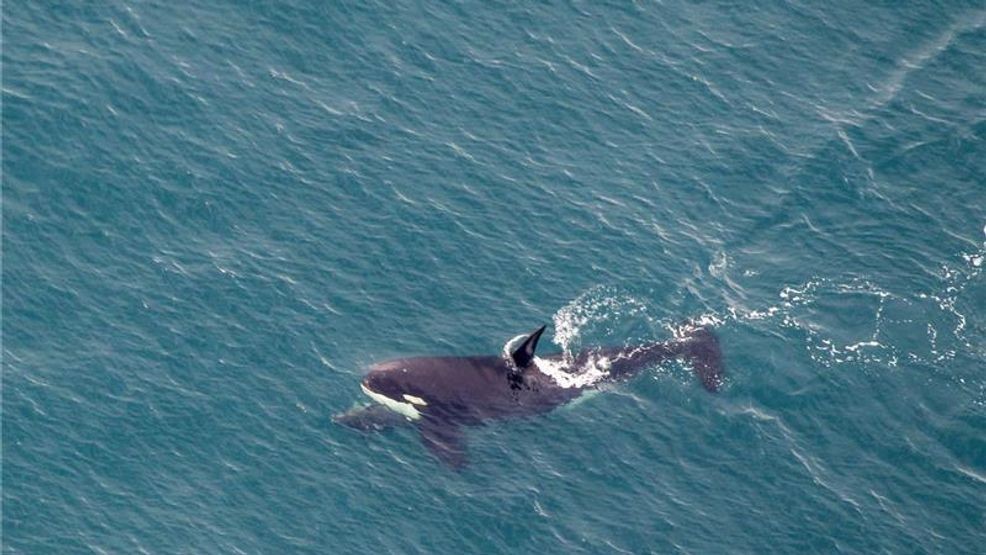In a rare convergence, an orca and a great white shark were both spotted off North Carolina’s Outer Banks this March, highlighting major shifts in predator movement driven by warming sea temperatures and seasonal migration patterns.
Apex Predator Activity Surges Off North Carolina as Water Temperatures Rise
March 2025 has brought a remarkable string of apex predator sightings to the Outer Banks. On March 13, an aerial survey by the Clearwater Marine Aquarium Research Institute confirmed an orca off Kitty Hawk—the first documented in the region since the institute began surveying five years ago. Just days later, a 12- to 13-foot great white shark was caught and released from shore near Hatteras Island, a rare event for land-based anglers.
These sightings, paired with real-time tracking data from OCEARCH and recent shark pings off the Carolina and Georgia coasts, suggest significant ecological activity underway in the mid-Atlantic. The timing coincides with seasonal migrations of large marine predators, responding to changing water temperatures and prey availability.
“This time of year is like flipping a switch in the Atlantic,” said Dr. Mike Benoit, Director of Conservation at the Shark Research Foundation. “Sixty-degree waters at Hatteras Lighthouse signal the start of a northbound movement for sharks, and sometimes, even orcas.”
According to the National Oceanic and Atmospheric Administration (NOAA), great white sharks often migrate north in early spring. During winter, they remain farther south, near Florida or the Gulf of Mexico. When sea temperatures begin to climb in March, they follow prey species up the coast, using the continental shelf and Gulf Stream corridors.
Why Great White Sharks Appear in the Outer Banks in March

White sharks are particularly sensitive to changes in ocean temperature. Juveniles tend to seek warmer, nearshore waters, while adults make long-distance migrations. March brings a shift in both temperature and food sources.
“Bluefish, menhaden, and sea trout begin pushing into North Carolina waters around mid-March,” Dr. Benoit explained. “That influx attracts larger predators like great whites who know the shelf is waking up.”
Recent catches have supported these observations. On March 15, anglers using heavy surf rods landed a great white estimated between 1,400 and 1,800 pounds. The catch took over 30 minutes and was safely released with minimal contact, following federal guidelines that protect the species under the Convention on International Trade in Endangered Species of Wild Fauna and Flora.
A separate OCEARCH ping also tracked the 13.8-foot male great white “Commander” near Palm Bay, Florida, suggesting that other tagged sharks are in active transition from their wintering grounds.
“People often forget that these sharks are very predictable,” said Dr. Benoit. “They follow patterns—water temperature, food availability, and breeding behavior. When these align, their movements become much easier to anticipate.”
Orca Sighting Raises Questions About Changing Movement Patterns

While great whites are expected in the region, the orca sighting came as a surprise.
Orcas, also known as killer whales, can reach 32 feet and are known to hunt large sharks, seals, and dolphins. They typically range from colder regions, including the coasts of Alaska, Norway, and Antarctica, but NOAA confirms they can be found in all oceans. Rare sightings along the Eastern Seaboard have occurred before—in 2011, a pod was seen near Oregon Inlet in Dare County—but such events remain highly unusual.
Clearwater Marine Aquarium researchers believe the orca may have followed prey or simply explored the productive shelf waters off North Carolina. The presence of large sharks and other marine mammals suggests the food web is in full motion.
“Seeing an orca this far south and this early indicates the ecosystem is highly active right now,” said Benoit. “It may have been targeting blacktip or dusky sharks, or simply testing a new hunting ground.”
The orca was spotted alone, but researchers say it is likely part of a nearby pod. Orcas are highly intelligent and social, often traveling in groups and coordinating hunts. Their appearance could mark a short-term exploration or signal a broader range expansion, especially if regional waters continue to warm in late winter.
What This Means for Shark Migration and Coastal Fisheries
The presence of apex predators off the Outer Banks in March is more than a spectacle—it is an early sign of spring migrations that affect the entire Atlantic food chain.
As water temperatures rise along the coast, baitfish move north, drawing an array of migratory species behind them. According to OCEARCH tracking data, sharks like Breton, tagged in Nova Scotia, have already pinged off Georgia and South Carolina. This pattern mirrors prior years when great whites transitioned from Florida toward Cape Cod by late spring.
Secondary predators like blacktip, sandbar, and spinner sharks often follow this same route, arriving in North Carolina in late March through May. Anglers can expect increasing activity along beaches and piers as the waters fill with forage species like mullet, anchovies, and juvenile bluefish.
Inshore fishermen may also benefit. Spotted sea trout, red drum, and flounder respond to the same warming cues. Their movements bring increased predation from sharks and create dynamic fishing opportunities in surf and nearshore zones.
“This is the signal that everything’s about to happen,” said one Hatteras Island fisherman who helped release the great white. “Once you see the big predators show up, you know the food chain is wide awake.”
Conservation and Responsible Observation
Although excitement surrounds these apex predator encounters, marine scientists and fishermen stress the importance of responsible engagement. Great white sharks are federally protected, and orca sightings should be reported to marine authorities for tracking purposes.
Local conservation groups encourage anglers to review shark handling videos, carry proper gear, and avoid removing large fish from the water. In North Carolina, the Aquariums division provides guidance on how to safely release sharks to reduce injury or death.
“We love sharks,” said Jason Rosenfeld, one of the anglers involved in the March 15 catch. “Our priority is always to protect the animal and release it healthy. You do not forget that kind of experience.”
Looking Ahead: What to Watch for in April
With sea temperatures climbing steadily, more shark sightings are expected off the mid-Atlantic coast in the coming weeks. Fishermen and researchers anticipate additional pings from white sharks like Ironbound and Maple, both of which have passed through the region in prior years.
By April, sand tiger and dusky sharks will begin appearing in greater numbers. Offshore, tuna and billfish will follow the bait. Whether orcas return remains uncertain, but their presence adds a compelling layer to an already active season.
“These waters are full of life,” Dr. Benoit said. “March is just the beginning.”
Donate Now to Help Us Save Sharks!
 Donate
Donate
